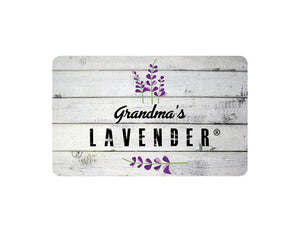Do you really know what's in your skincare and cosmetics?
Is pretty packaging and "greenwashing" labeling misleading you? Convincing you that their product is amazing despite hidden ingredients. I've looked at some of the most common and widely used ingredients used in skincare, cosmetics, and household cleaners. I want you to be able to shop with confidence and know that you have the knowledge to make health informed decisions for you and your family.
Lets start with a few of the big ones. Parabens and Fragrance.
Parabens
Parabens are used as a preservative in most products preventing the growth of bacteria or fungi, which increases the shelf life of a product.
In a 2004 claim, research suggested that in a study of 20 women with breast tumors, 19 out of 20 showed traces of parabens within the tumor. A follow up study done by the University of Reading in 2013 supported this claim.
They stated that "parabens at concentrations measured in human breast tissue can increase proliferation of MCF-7 human breast cancer cells."
The University was hesitant to conclusively connect parabens to the causation of cancer and said more studies were needed to have more conclusive results.
The problem isn’t necessarily with short term exposure. The reason parabens are a big deal is because it is in an enormous amount of products. Propylparaben is found in 2,694 products. And it is because of the long term exposure. Parabens have been detected in infants and young children so the exposure may begin in early life and be continuous.
Current regulations from the Food & Drug Administration, the American Cancer Society, and Health Canada is parabens are considered safe for use in human products.
This is where you have to decide. The Cosmetic Ingredient Review recommends concentration limits for a single (0.4%) and total paraben amounts (0.8%) in a single product. However, this recommendation does not take into account for a consumer usage (exposure) of other products containing parabens.
There are a wide variety of products that contain parabens from leave-on and rinse off products especially those with a high water content like shampoos and conditioners; Moisturizers, face and skin cleaners, sunscreen, deodorants, shaving gels, toothpaste, and make-up to name a few.
If you are looking for it on labels it will appear as one or multiple of the following: Methylparaben, Ethylparaben, Propylparaben, Butylparaben, Isobutylparaben, Isopropylparaben, Phenylparaben, Benzylparaben or, Pentylparaben.
Fragrance
Fragrance are a complex combination of natural or made man substances to give a product its signature smell.
Fragrance is found in most personal care products including sunscreen, shampoo, soap, body wash, deodorant, body lotion, makeup, facial cream, toner, serums, exfoliating scrubs, perfumes, laundry detergents, fabric softeners, dryer sheets, and air fresheners.
The International Fragrance Association (IFRA) lists 3,059 materials as being used in fragrant compounds. Of these 3,059 ingredients some have links health conditions like cancer, reproductive toxicity, and organ toxicity, allergies and sensitivities.
There was a study done in 2016 that assessed self-reported health effects from Fragrance. This survey of random people found that 99.1% were exposed to to fragrant products at least once a week from their own use, other' use, or both. The participants reported a variety of health problems ranging from migraines and asthma to gastrointestinal and cardiovascular issues.
The findings also showed a high percentage of those that were apart of the survey did not know of the chemicals in fragrance and would not have continued to use the product if they had known of the contents prior to use.
Current laws do not give the FDA the authority to require disclosure or public safety fragrant ingredients. In the US, companies are required to list fragrance on the ingredient label, however, the are not required to list the individual constituents of fragrance in order to preserve trade secrets (Fair Packaging and abetting act of 1966). This loophole allows discourse gaps.
The best way to avoid products with fragrance is to check the ingredient label.
Parabens and Fragrance are some of most widely used ingredients in skincare products, cosmetics, and household cleaners. Knowing how to read ingredient labels, and what to avoid is key. Take advantage of apps like think dirty that will do the work of shifting out products to avoid and products to try. Buying clean products doesn't have to be a hassle.
Emma Kesterson
Owner | Grandma's Lavender


